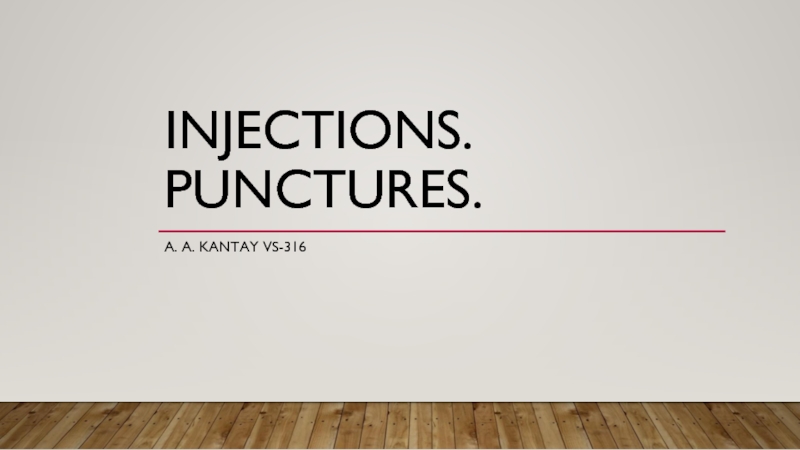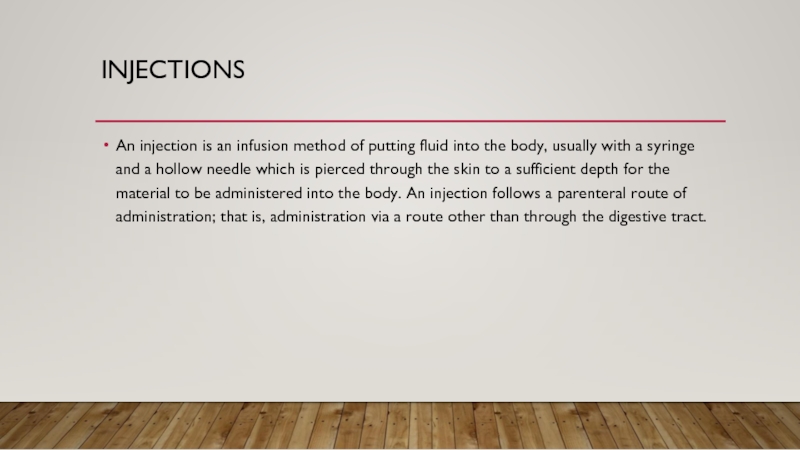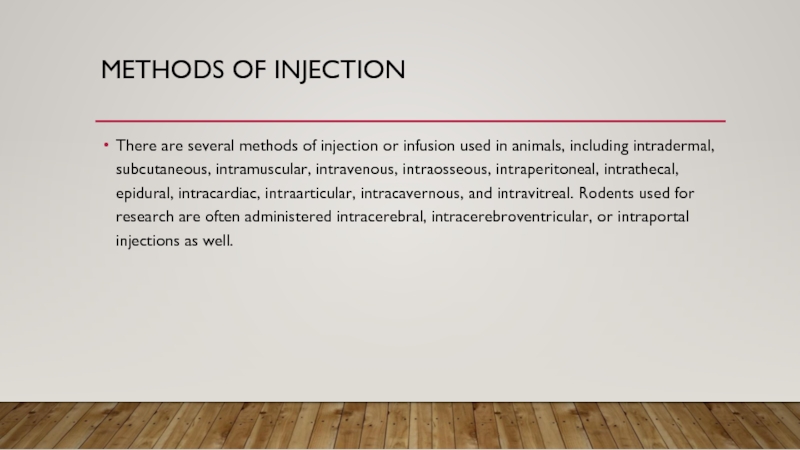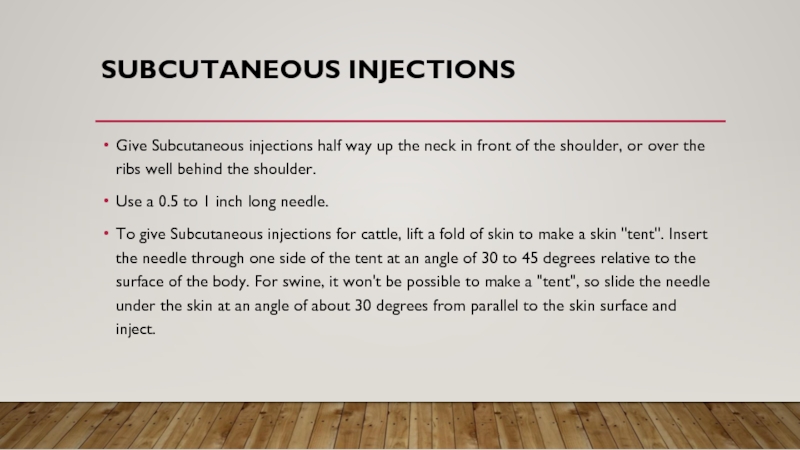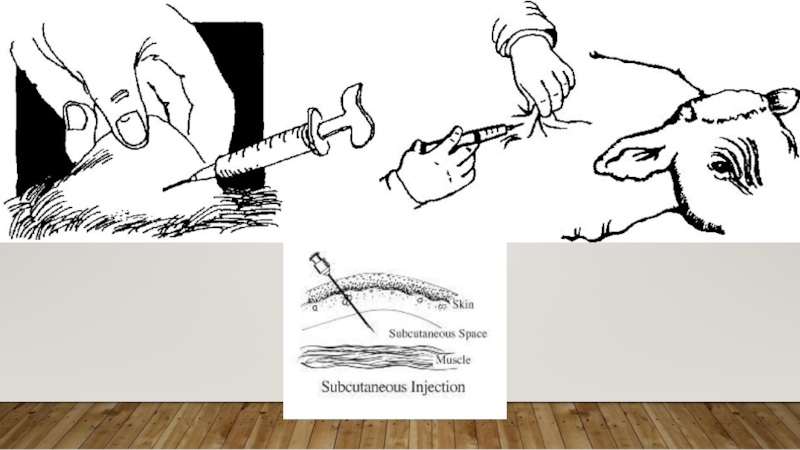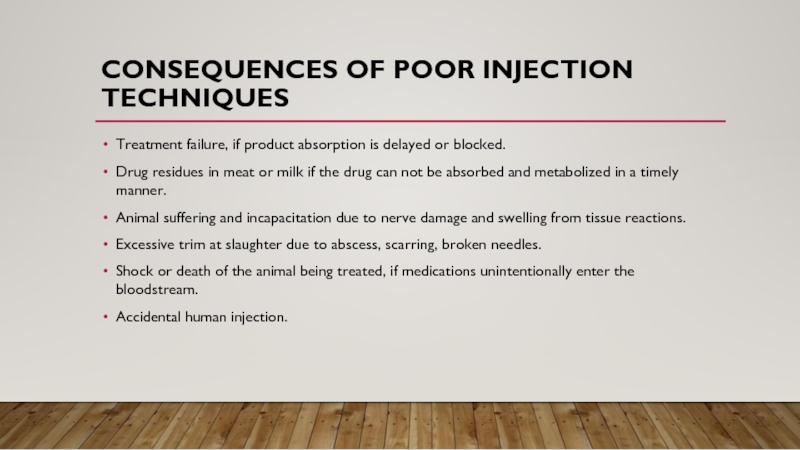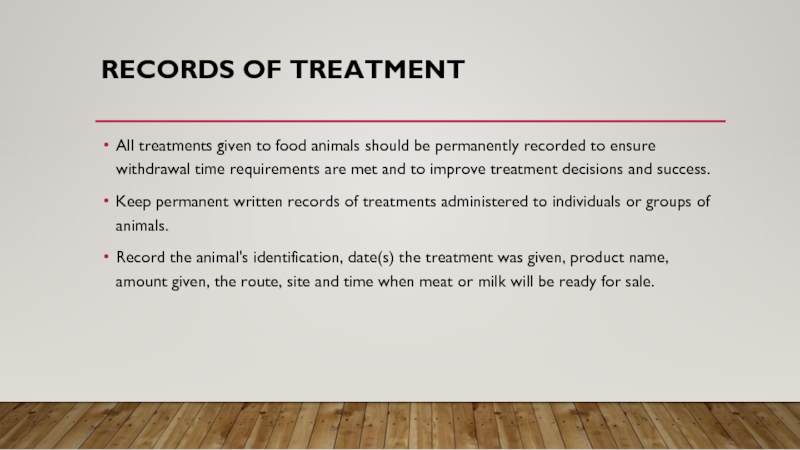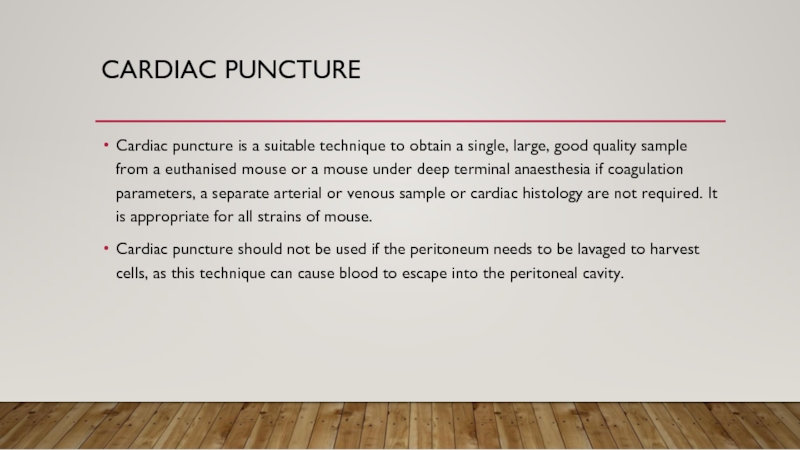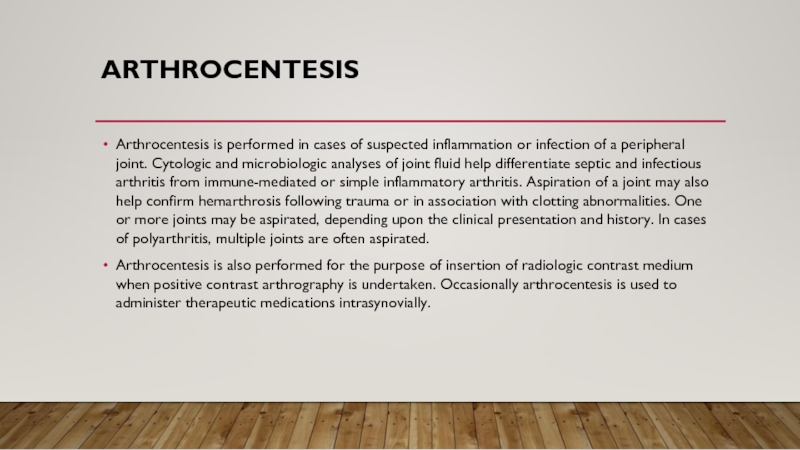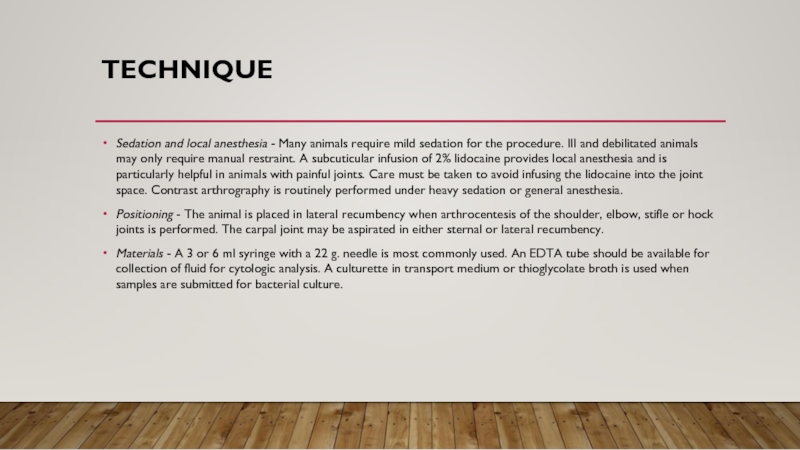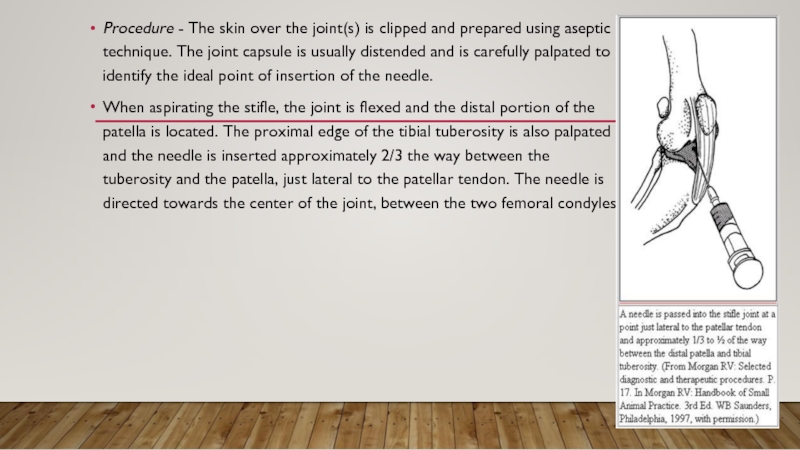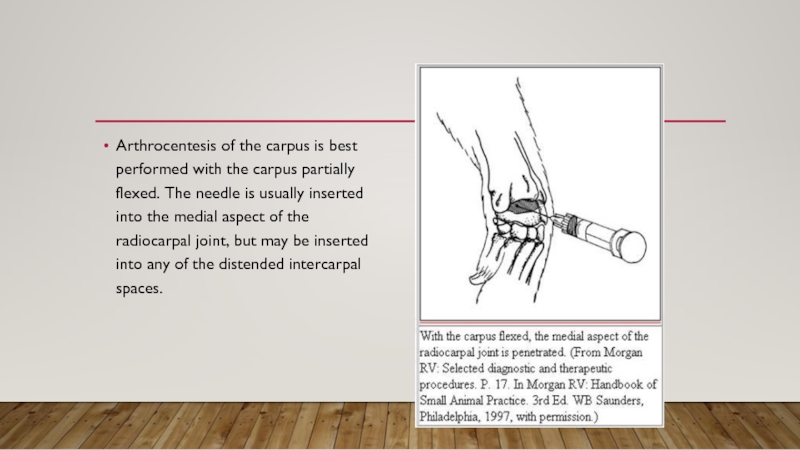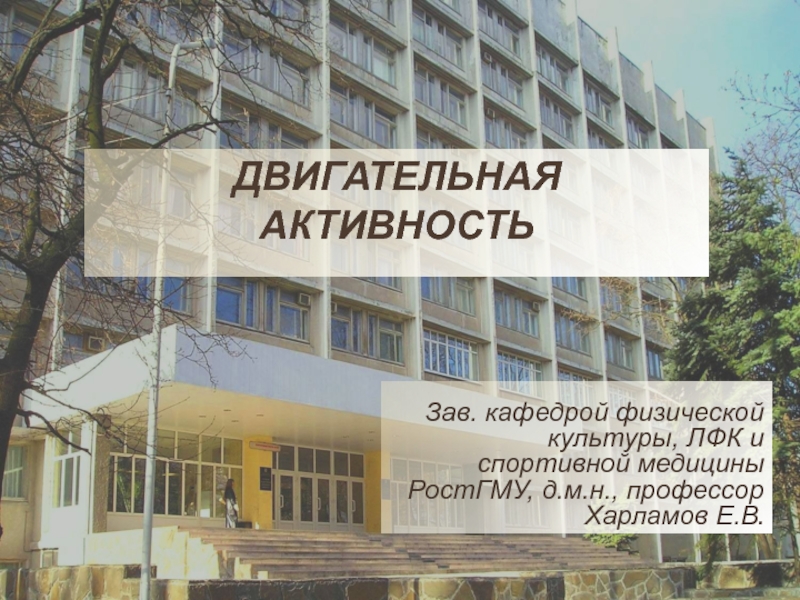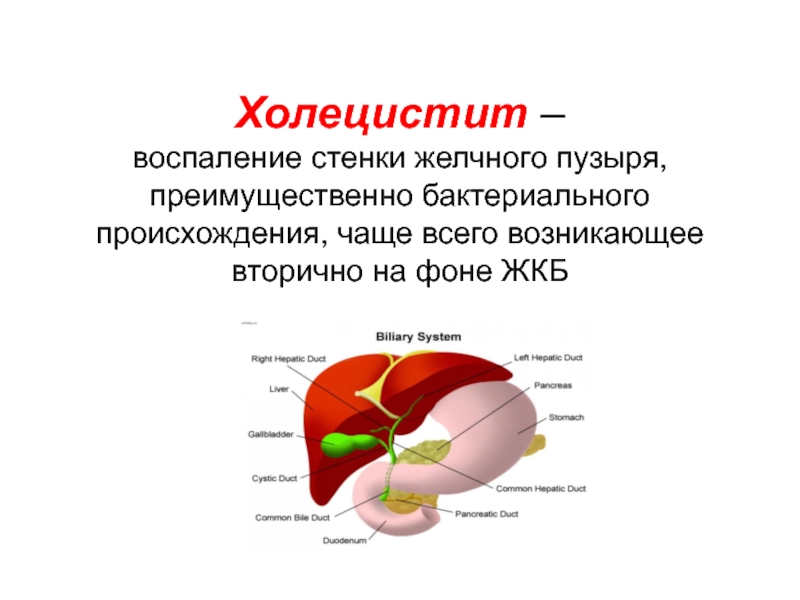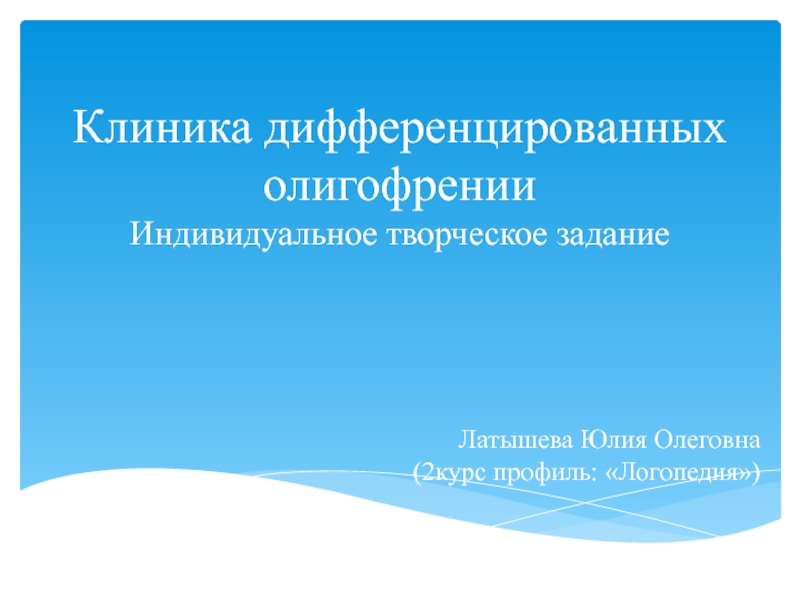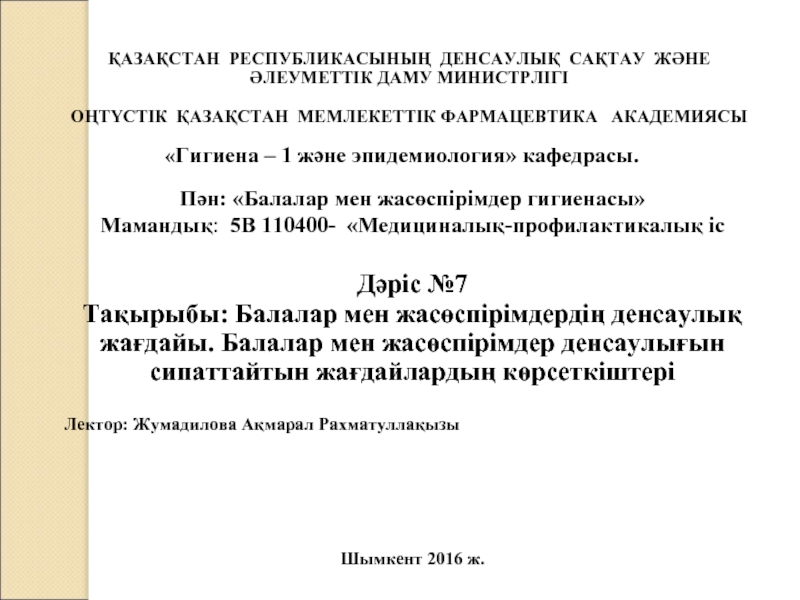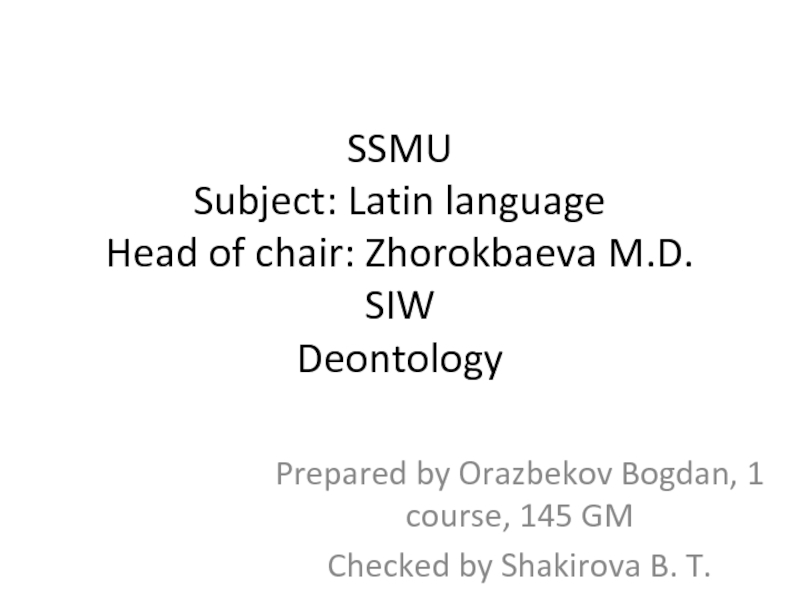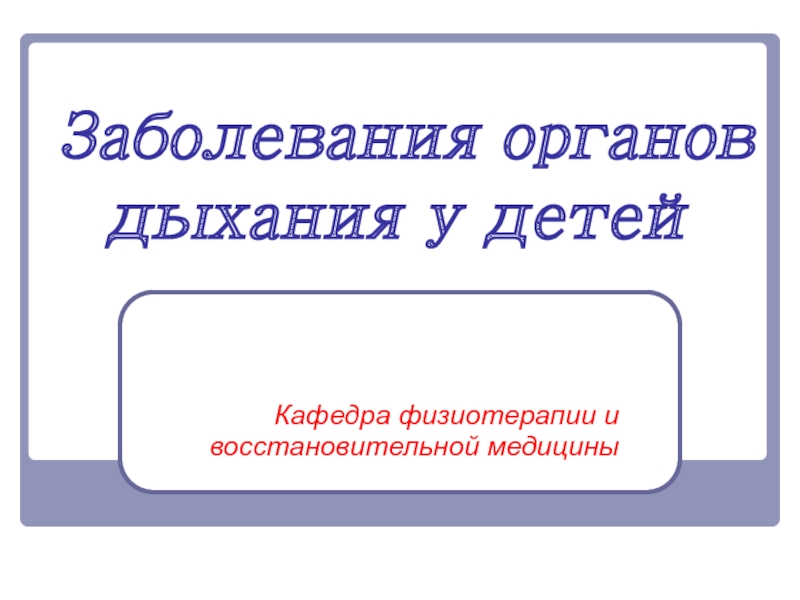- Главная
- Разное
- Дизайн
- Бизнес и предпринимательство
- Аналитика
- Образование
- Развлечения
- Красота и здоровье
- Финансы
- Государство
- Путешествия
- Спорт
- Недвижимость
- Армия
- Графика
- Культурология
- Еда и кулинария
- Лингвистика
- Английский язык
- Астрономия
- Алгебра
- Биология
- География
- Детские презентации
- Информатика
- История
- Литература
- Маркетинг
- Математика
- Медицина
- Менеджмент
- Музыка
- МХК
- Немецкий язык
- ОБЖ
- Обществознание
- Окружающий мир
- Педагогика
- Русский язык
- Технология
- Физика
- Философия
- Химия
- Шаблоны, картинки для презентаций
- Экология
- Экономика
- Юриспруденция
Injections. Punctures презентация
Содержание
- 1. Injections. Punctures
- 2. INJECTIONS An injection is an infusion method
- 3. METHODS OF INJECTION There are several methods
- 4. INTRAMUSCULAR INJECTIONS Choose muscle tissue of
- 6. SUBCUTANEOUS INJECTIONS Give Subcutaneous injections half way
- 8. INTRAVENOUS THERAPY Intravenous therapy is the infusion
- 10. CONSEQUENCES OF POOR INJECTION TECHNIQUES Treatment failure,
- 11. RECORDS OF TREATMENT All treatments given to
- 12. CARDIAC PUNCTURE Cardiac puncture is a suitable
- 13. ARTHROCENTESIS Arthrocentesis is performed in cases of
- 14. TECHNIQUE Sedation and local anesthesia - Many animals
- 15. Procedure - The skin over the joint(s) is
- 16. Arthrocentesis of the carpus is best performed
- 17. THANK YOU FOR ATTENTION!
Слайд 2INJECTIONS
An injection is an infusion method of putting fluid into the
body, usually with a syringe and a hollow needle which is pierced through the skin to a sufficient depth for the material to be administered into the body. An injection follows a parenteral route of administration; that is, administration via a route other than through the digestive tract.
Слайд 3METHODS OF INJECTION
There are several methods of injection or infusion used
in animals, including intradermal, subcutaneous, intramuscular, intravenous, intraosseous, intraperitoneal, intrathecal, epidural, intracardiac, intraarticular, intracavernous, and intravitreal. Rodents used for research are often administered intracerebral, intracerebroventricular, or intraportal injections as well.
Слайд 4INTRAMUSCULAR INJECTIONS
Choose muscle tissue of lesser value to consumers for
intramuscular injections. In cattle, for example, intramuscular injections where possible, are often given in the neck area instead of the hip.
Give intramuscular injections deep into a muscle. Use a needle long enough to penetrate skin, subcutaneous tissue and fat to reach the muscle. The needle should enter the skin perpendicular to the skin surface.
Insert the needle into the animal, and then attach the syringe to the needle. Check that the needle is not in a blood vessel by pulling back on the plunger and observing for blood flow in the tip of the syringe. If blood appears, remove the needle and put it in a different location at least one inch away from the original injection site.
Give intramuscular injections deep into a muscle. Use a needle long enough to penetrate skin, subcutaneous tissue and fat to reach the muscle. The needle should enter the skin perpendicular to the skin surface.
Insert the needle into the animal, and then attach the syringe to the needle. Check that the needle is not in a blood vessel by pulling back on the plunger and observing for blood flow in the tip of the syringe. If blood appears, remove the needle and put it in a different location at least one inch away from the original injection site.
Слайд 6SUBCUTANEOUS INJECTIONS
Give Subcutaneous injections half way up the neck in front
of the shoulder, or over the ribs well behind the shoulder.
Use a 0.5 to 1 inch long needle.
To give Subcutaneous injections for cattle, lift a fold of skin to make a skin "tent". Insert the needle through one side of the tent at an angle of 30 to 45 degrees relative to the surface of the body. For swine, it won't be possible to make a "tent", so slide the needle under the skin at an angle of about 30 degrees from parallel to the skin surface and inject.
Use a 0.5 to 1 inch long needle.
To give Subcutaneous injections for cattle, lift a fold of skin to make a skin "tent". Insert the needle through one side of the tent at an angle of 30 to 45 degrees relative to the surface of the body. For swine, it won't be possible to make a "tent", so slide the needle under the skin at an angle of about 30 degrees from parallel to the skin surface and inject.
Слайд 8INTRAVENOUS THERAPY
Intravenous therapy is the infusion of liquid substances directly into
a vein. Intravenous simply means "within vein". Therapies administered intravenously are often included in the designation of specialty drugs. It is commonly referred to as a drip because many systems of administration employ a drip chamber, which prevents air from entering the blood stream (air embolism), and allows an estimation of flow rate.
Intravenous therapy may be used to correct electrolyte imbalances, to deliver medications, for blood transfusion or as fluid replacement to correct, for example, dehydration. Intravenous therapy can also be used for chemotherapy.
Compared with other routes of administration, the intravenous route is the fastest way to deliver fluids and medications throughout the body. The bioavailability of the medication is 100% in Intravenous therapy.
Intravenous therapy may be used to correct electrolyte imbalances, to deliver medications, for blood transfusion or as fluid replacement to correct, for example, dehydration. Intravenous therapy can also be used for chemotherapy.
Compared with other routes of administration, the intravenous route is the fastest way to deliver fluids and medications throughout the body. The bioavailability of the medication is 100% in Intravenous therapy.
Слайд 10CONSEQUENCES OF POOR INJECTION TECHNIQUES
Treatment failure, if product absorption is delayed
or blocked.
Drug residues in meat or milk if the drug can not be absorbed and metabolized in a timely manner.
Animal suffering and incapacitation due to nerve damage and swelling from tissue reactions.
Excessive trim at slaughter due to abscess, scarring, broken needles.
Shock or death of the animal being treated, if medications unintentionally enter the bloodstream.
Accidental human injection.
Drug residues in meat or milk if the drug can not be absorbed and metabolized in a timely manner.
Animal suffering and incapacitation due to nerve damage and swelling from tissue reactions.
Excessive trim at slaughter due to abscess, scarring, broken needles.
Shock or death of the animal being treated, if medications unintentionally enter the bloodstream.
Accidental human injection.
Слайд 11RECORDS OF TREATMENT
All treatments given to food animals should be permanently
recorded to ensure withdrawal time requirements are met and to improve treatment decisions and success.
Keep permanent written records of treatments administered to individuals or groups of animals.
Record the animal's identification, date(s) the treatment was given, product name, amount given, the route, site and time when meat or milk will be ready for sale.
Keep permanent written records of treatments administered to individuals or groups of animals.
Record the animal's identification, date(s) the treatment was given, product name, amount given, the route, site and time when meat or milk will be ready for sale.
Слайд 12CARDIAC PUNCTURE
Cardiac puncture is a suitable technique to obtain a single,
large, good quality sample from a euthanised mouse or a mouse under deep terminal anaesthesia if coagulation parameters, a separate arterial or venous sample or cardiac histology are not required. It is appropriate for all strains of mouse.
Cardiac puncture should not be used if the peritoneum needs to be lavaged to harvest cells, as this technique can cause blood to escape into the peritoneal cavity.
Cardiac puncture should not be used if the peritoneum needs to be lavaged to harvest cells, as this technique can cause blood to escape into the peritoneal cavity.
Слайд 13ARTHROCENTESIS
Arthrocentesis is performed in cases of suspected inflammation or infection of
a peripheral joint. Cytologic and microbiologic analyses of joint fluid help differentiate septic and infectious arthritis from immune-mediated or simple inflammatory arthritis. Aspiration of a joint may also help confirm hemarthrosis following trauma or in association with clotting abnormalities. One or more joints may be aspirated, depending upon the clinical presentation and history. In cases of polyarthritis, multiple joints are often aspirated.
Arthrocentesis is also performed for the purpose of insertion of radiologic contrast medium when positive contrast arthrography is undertaken. Occasionally arthrocentesis is used to administer therapeutic medications intrasynovially.
Arthrocentesis is also performed for the purpose of insertion of radiologic contrast medium when positive contrast arthrography is undertaken. Occasionally arthrocentesis is used to administer therapeutic medications intrasynovially.
Слайд 14TECHNIQUE
Sedation and local anesthesia - Many animals require mild sedation for the
procedure. Ill and debilitated animals may only require manual restraint. A subcuticular infusion of 2% lidocaine provides local anesthesia and is particularly helpful in animals with painful joints. Care must be taken to avoid infusing the lidocaine into the joint space. Contrast arthrography is routinely performed under heavy sedation or general anesthesia.
Positioning - The animal is placed in lateral recumbency when arthrocentesis of the shoulder, elbow, stifle or hock joints is performed. The carpal joint may be aspirated in either sternal or lateral recumbency.
Materials - A 3 or 6 ml syringe with a 22 g. needle is most commonly used. An EDTA tube should be available for collection of fluid for cytologic analysis. A culturette in transport medium or thioglycolate broth is used when samples are submitted for bacterial culture.
Positioning - The animal is placed in lateral recumbency when arthrocentesis of the shoulder, elbow, stifle or hock joints is performed. The carpal joint may be aspirated in either sternal or lateral recumbency.
Materials - A 3 or 6 ml syringe with a 22 g. needle is most commonly used. An EDTA tube should be available for collection of fluid for cytologic analysis. A culturette in transport medium or thioglycolate broth is used when samples are submitted for bacterial culture.
Слайд 15Procedure - The skin over the joint(s) is clipped and prepared using
aseptic technique. The joint capsule is usually distended and is carefully palpated to identify the ideal point of insertion of the needle.
When aspirating the stifle, the joint is flexed and the distal portion of the patella is located. The proximal edge of the tibial tuberosity is also palpated and the needle is inserted approximately 2/3 the way between the tuberosity and the patella, just lateral to the patellar tendon. The needle is directed towards the center of the joint, between the two femoral condyles.
When aspirating the stifle, the joint is flexed and the distal portion of the patella is located. The proximal edge of the tibial tuberosity is also palpated and the needle is inserted approximately 2/3 the way between the tuberosity and the patella, just lateral to the patellar tendon. The needle is directed towards the center of the joint, between the two femoral condyles.
Слайд 16Arthrocentesis of the carpus is best performed with the carpus partially
flexed. The needle is usually inserted into the medial aspect of the radiocarpal joint, but may be inserted into any of the distended intercarpal spaces.
